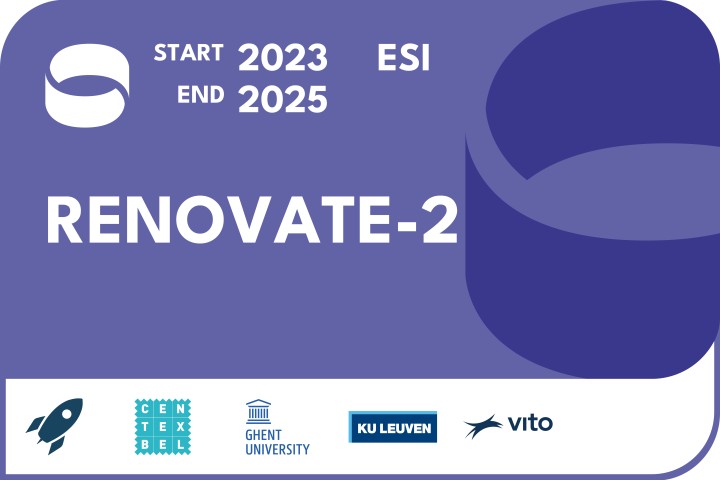RENOVATE-2
Solvent-resistant nano- and ultrafiltration: opening new perspectives in plastic recycling.

An interesting technology to increase recycling rates is solvent-based recycling dissolutionprecipitation), for two main reasons:
-
solvents can selectively dissolve polymers from a polymer mix, and
-
whilst the solvents have liquefied the polymers, it is possible to perform a full cleaning of the polymer from additives, including masterbatch colours, legacy chemicals, etc.
Solvent-based recycling is somewhere in between mechanical and chemical recycling, as it leaves the polymer intact, but - if well performed - can result in a full cleaning, which should in theory allow food contact again (as highest aim). On the other hand, efficient and cost-effective cleaning of this complex solvent soup is an important challenge. Indeed, solvent and energy use should be minimized, in best case avoiding large amounts of solvent and non-solvent. Furthermore, the liquid soup with the polymers contains inorganic and organic molecules of different kinds that should be removed. All this is embedded in a quite viscous and aggressive environment.
The overall objective of the sprint cSBO project RENOVATE (which started in 2021 and will end mid2022) was to evaluate to what extend the new generation of ultra-stable polymeric membranes for solvent-resistant nanofiltration (SRNF) and ultrafiltration can offer solutions to some of the most important bottlenecks in polymer recycling. The main goals were:
-
to develop stable membranes for use in solvents and at temperatures that dissolve polymers,
-
to provide evidence and understanding which role membranes can play in solvent-based recycling, and
-
to research four cases (i.e., removal of (brominated) flame retardant from WEEE plastics, removal of organic colour molecules, removal of inorganic colour molecules, and haze removal.
The obtained results thus far have proven that the approach proposed in the RENOVATE project makes sense. Therefore, the original goals will be maintained in the new continuation project RENOVATE-2, with slight adaptations or extra focus based on learnings of the past year:
-
Further tuning of membranes for specific applications;
-
Gaining more fundamental understanding on the presence of additives in the dissolved polymer;
-
Focus on other polymers, such as ABS and polyolefins (starting with LDPE);
-
Focus on haze and yellowing;
-
Perform further tests with real waste (e.g., post consumer polystyrene packaging waste);
-
Optimize membrane engineering and up-scaling;
-
Check on quality of the renovated polymers.
The target group of this project covers about all sections of the value chain because polymer producers, distributors, and converters (obviously also the collection & recycling companies) process polymers and are able to create value by recycling. However, the main plastic converting sectors in the ‘waste story’ are packaging (45%), construction (23%) and a group of ‘other’ companies (20%).
All companies from the current Advisory Board are studying routes to reduce waste and recover valuable materials. Nearly all these companies, although multinationals, are based in Flanders. We envisage that the RENOVATE technology will contribute to increase the volume of recycled plastics, enable recycling of ‘new’ plastics, and will provide new technology for recycling companies.